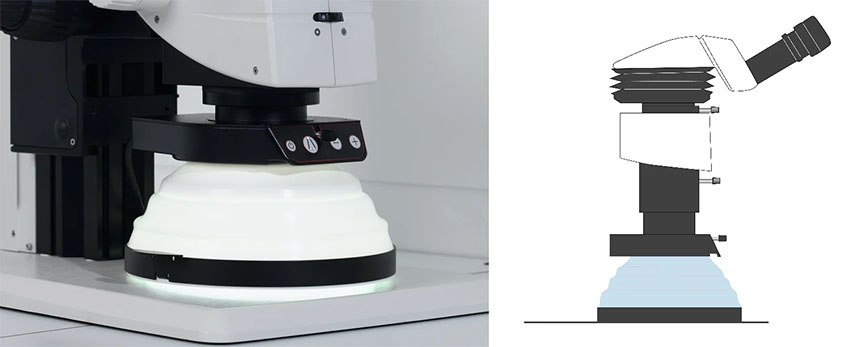

When it comes to using microscopes, illumination is one of the most critical factors affecting image quality. The right LED microscope lighting can significantly improve specimen visibility and provide consistent light output under various observation conditions. In this blog post, we will explore how to choose the appropriate LED microscope illumination to meet the demands of diverse industrial applications.
1. Advantages of LED Illumination
LED lighting has become the preferred choice for microscope illumination due to its efficiency and longevity. Compared to traditional bulbs, LED illumination systems offer several enticing benefits:
Energy-efficient: LED light sources consume less energy and are free from harmful substances like mercury, making them more environmentally friendly.
Stable Light Output: LEDs provide consistent brightness and color temperature, ensuring uniform image quality across different observation conditions.
Long Lifespan: With up to 50,000 hours of use, LEDs significantly reduce the frequency and cost of bulb replacement compared to traditional light sources.
2. Understanding Different Types of LED Illumination
Selecting the right type of illumination is crucial for optimal observation results. Common LED microscope illumination types include:
Ring Light (RL): Ideal for surface observation, it offers uniform lighting and can be enhanced with diffusers or polarizers to reduce glare boost contrast..jpg)
Near Vertical Illumination (NVI): This method provides greater detail in transparent and translucent specimens by delivering light at an angle that enhances texture and depth..jpg)
Coaxial Illumination (CXI): Perfect for observing surface features, this type of illumination aligns the light source with the optical axis of the microscope, minimizing shadows and enhancing the clarity of surface details..jpg)
Spot Light (SLI): This focused light source is excellent for high-magnification observations, sharpening fine details and enhancing contrast for intricate specimen features..jpg)
Multi-Contrast Illumination (MCI): This versatile option allows users to switch between lighting techniques to achieve the desired contrast level, making it suitable for a variety of specimen types..jpg)
Backlight Illumination (BLI): This type is particularly effective for viewing transparent or semi-transparent specimens, providing excellent contrast and clarity by illuminating from behind the sample..jpg)
Diffused Lighting (DI) or High Diffusion Illumination (HDI): These lighting types provide a soft, gently-lit environment that is especially effective for reducing surface reflections and improving overall image quality.
3. Integrating Illumination Systems
When selecting LED microscope lighting, it is essential to consider compatibility and user-friendliness. Many modern LED lighting systems come equipped with easy-to-integrate control interfaces that allow for seamless connection to microscopes. Furthermore, features such as adjustable light intensity and varying illumination modes provide users with greater flexibility during observations.
4. Real-World Applications
Choosing the appropriate LED lighting system is critical in settings like hospitals and research laboratories. For example, the CoolLED pE-300white LED light source provides bright illumination for fluorescent microscopy, making it suitable for routine research applications in medical facilities. Additionally, the Leica DM250 LED microscope guarantees stable illumination for transmitted light observations, enhancing user convenience.
Conclusion
Selecting the right microscope illumination enhances observational quality and provides users with a more efficient working experience. Whether you are in research, healthcare, or industrial applications, understanding different types of LED illumination systems and selecting one that best meets your needs is crucial for ensuring quality in microscopic observations. Visit our website to explore more about our custom LED modules and let us enhance your microscopy experience today!

